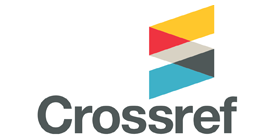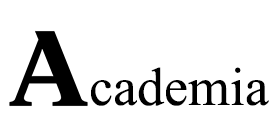Construction and validation of an English writing anxiety questionnaire and development of a scale to measure learners' anxiety levels
Keywords:
Writing anxiety, English language, , questionnaire construction, questionnaire validation, measurement scale developmentAbstract
Writing anxiety is a significant barrier to developing proficient English writing skills among EFL learners, particularly in the Iranian context. The present study was an attempt to address (i) EFL writing anxiety by developing and validating a context-specific writing anxiety questionnaire for Iranian EFL learners and (ii) the limitations of the existing measurement scales that are not tailored to the Iranian EFL context. To this end, the results of previous research on the attitudes of EFL learners were used to construct the EFL Writing Anxiety Questionnaire (EFLWAQ), which capture the multifaceted nature of writing anxiety, encompassing emotional, cognitive, and behavioral dimensions. A sample of 1061 EFL learners were selected from among EFL learners studying English language at five institutes of Kabir Academy, Kandoo, Gama, Pazhuhesh, and Sedaye Tabriz starting on April, 2023. The sample was divided into two separate samples: one for exploratory factor analysis (n = 232) and the other for confirmatory factor analysis (n = 829). The study was based on the correlational research design. An initial pool of items was refined through content validity analysis, achieving acceptable CVR and CVI scores. The initially validated questionnaire was then distributed to EFL learners in order to find the main factors of Iranian language learners' writing anxiety. The factor-analytic approach revealed a multi-dimensional structure of writing anxiety, identifying the key factors of Behavioral, Physiological, Cognitive, Maladaptive, and Emotional. It also confirmed the model fit, with all factors demonstrating high internal consistency. Findings indicate that the EFLWAQ is a reliable and valid instrument for measuring writing anxiety among EFL learners. The study’s outcomes provide valuable insights for educators, researchers, and policymakers to enhance English writing instruction and support learners in overcoming writing anxiety.
Downloads
References
Ahmadian, M. J. (2012). The relationship between working memory capacity and writing performance under careful online planning. Journal of Applied Linguistics, 12(2), 33-50.
Alrabai, F. (2015). The influence of teachers' anxiety-reducing strategies on learners' foreign language anxiety. Innovation in Language Learning and Teaching, 9(2), 163-190. https://doi.org/10.1080/17501229.2014.890203
Atay, D., & Kurt, G. (2006). Prospective teachers and L2 writing anxiety. Asian EFL Journal, 8(4), 100-118.
Cheng, Y. S. (2004). A measure of second language writing anxiety: Scale development and preliminary validation. Journal of second language writing, 13(4), 313-335. https://doi.org/10.1016/j.jslw.2004.07.001
Cheng, Y.S., Horwitz, E. K., & Schallert, D.L. (1999). Language anxiety. Differentiating writing and speaking components. Language Learning, 49, 417-46
Firouzi, M., Zoghi, M., & Assadi Aidinloo, N.(2024).New Insights into Writing Anxiety of EFL Learners: A Context-Specific Qualitative Study.Journal of Adolescent and Youth Psychological Studies, 5(12), 114-124.http://dx.doi.org/10.61838/kman.jayps.5.12.13
Getie, A. S. (2020). Factors affecting the attitudes of students towards learning English as a foreign language. Cogent Education, 7(1), 1738184.
Graham, S. (2018). A revised writer (s)-within-community model of writing. Educational Psychologist, 53(4), 258-279.
Hassan, B. A. (2001). The relationship of writing apprehension and self-esteem to the writing quality and quantity of EFL University students. Mansoura Faculty of Education Journal, [Online]. http://eric.ed.gov/PDFS/ED459671.pdf
Horwitz, E. K., Horwitz, M. B., & Cope, J. (1986). Foreign language classroom anxiety. The Modern Language Journal, 70, 125-132.
Jebreil, N., Azizifar, A., Gowhary, H., & Jamalinesari, A. (2015). A study on writing anxiety among Iranian EFL students. International Journal of Applied Linguistics and English Literature, 4(2), 68–72. https://doi.org/10.7575/aiac.ijalel.v.4n.2p.68
Johnson, D., & VanBrackle, L. (2012). Linguistic discrimination in writing assessment: How raters react to African American “errors,” ESL errors, and standard English errors on a state-mandated writing exam. Assessing Writing, 17(1), 35-54.
Kim, J.-H. (2000). Foreign language listening anxiety: A study of Korean students learning English. Unpublished doctoral dissertation, University of Texas, Austin.
MacIntyre, P. D., & Gardner, R. C. (1991). Language anxiety: Its relationship to other anxieties and to processing in native and second languages. Language learning, 41(4), 513-534. https://doi.org/10.1111/j.1467-1770.1991.tb00691.x
MacIntyre, P. D., & Gardner, R. C. (1994). The subtle effects of language anxiety on cognitive processing in the second language. Language learning, 44(2), 283-305. https://doi.org/10.1111/j.1467-1770.1994.tb01103.x
Oxford, R. L. (1990). Language learning strategies: What every teacher should know. Heinle & Heinle.
Pajares, F., & Johnson, M. J. (1994). Confidence and competence in writing: The role of self-efficacy, outcome expectancy, and apprehension. Research in the Teaching of English, 28(3), 313-331.
Rose M (1984). Writer’s Block: Cognitive Dimension. Carbondale, Illinois: Southern Illinois University Press.
Szyszka, M. (2017). Pronunciation learning strategies and language anxiety. Switzerland: Springer, 10, 978-3.
Tavakoli, P., Rakhshanderoo, S., Izadpanah, S., & Moradi, R. (2014). The impact of ego identity types on language proficiency among Iranian EFL learners. International Journal of Instruction, 12(1), 57-70. Retrieved from ERIC
Zeinivand, T., Azizifar, A., & Gowhary, H. (2015). The relationship between attitude and speaking proficiency in Iranian EFL learners. International Journal of Instruction, 12(1), 49-66. Retrieved from ERIC
Downloads
Published
Submitted
Revised
Accepted
Issue
Section
License
Copyright (c) 2025 Marziyeh Firouzi (Author); Masoud Zoghi; Nader Assadi Aidinloo (Author)

This work is licensed under a Creative Commons Attribution-NonCommercial 4.0 International License.
















